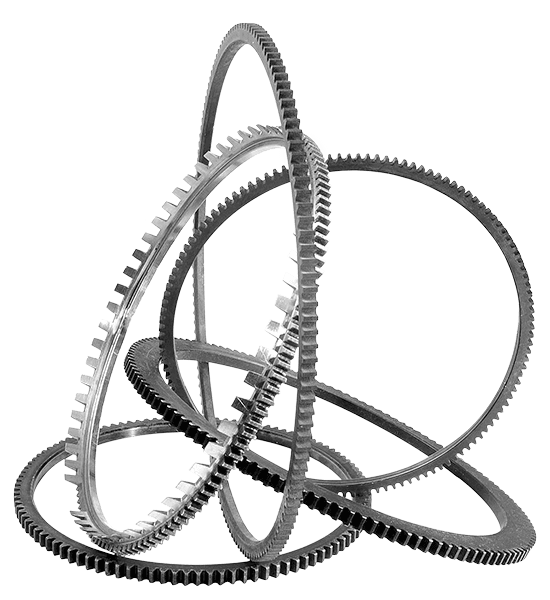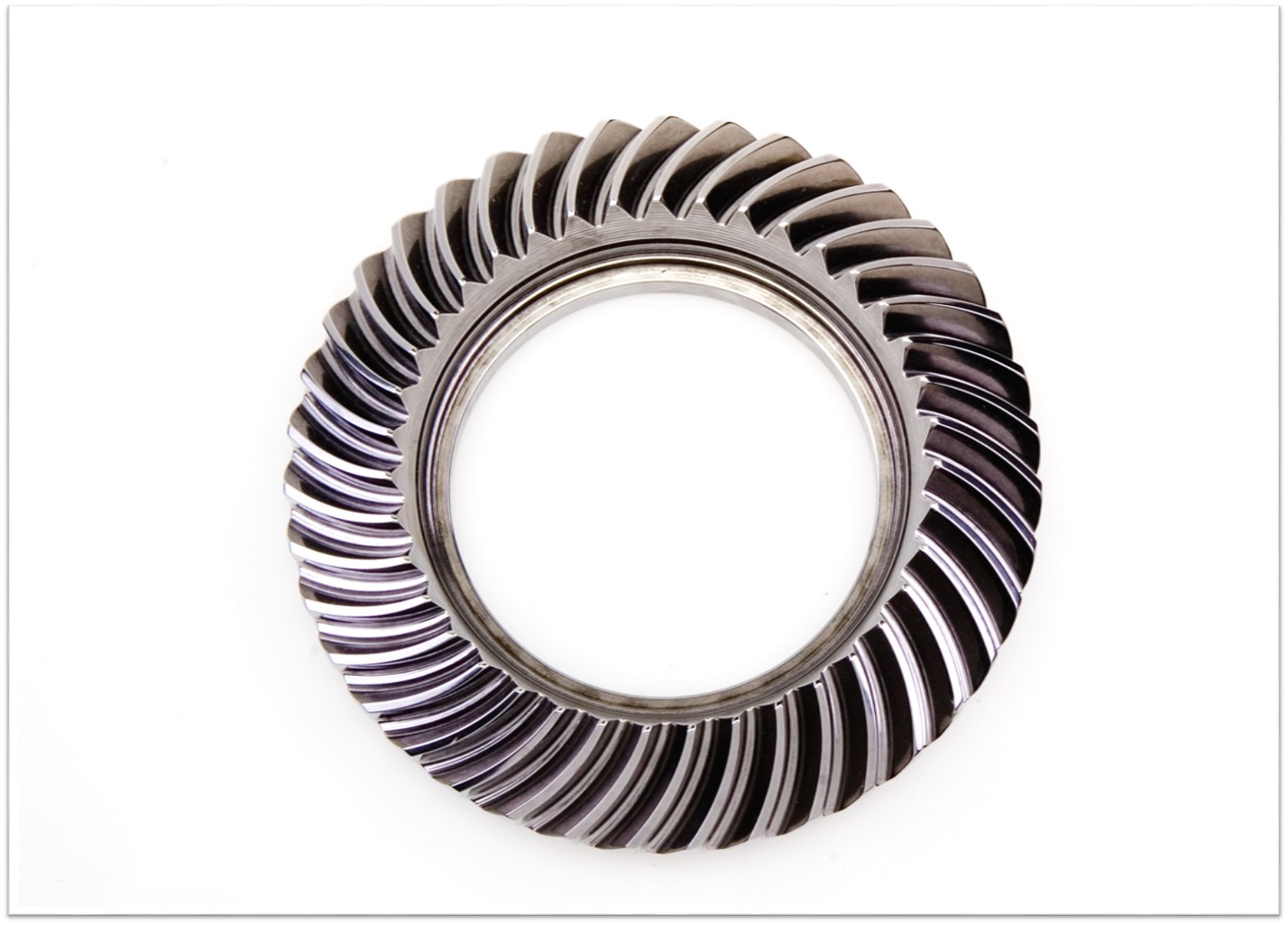Product Description
| 1 | Item Name | The ring gear of the automobile industry |
| 2 | Size | As per approval product drawings. |
| 3 | DRW Format | DWG, PDF, IGS, STEP, SLDPRT, SLDDRW, PRT, DRW, DXF, X_T, etc… |
| 4 | Weight | 0.1-200 kg |
| 5 | Material | Differenty types of Steels, Carbon Steel, Stainless Steel, Alloy Steel etc;Aluminum alloy, copper alloy, titanium alloy, tungsten molybdenum alloy and other non-ferrous metals. |
| 6 | Application | Industry Equipments, Autos, Construction machinery Parts, Agricultural machinery, Railway relevant Parts, Petrochemical machinery, Mining machinery, The power industry. |
| 7 | Surface Treatment | Self color, Polishing, Painting, Powder Coating, Electrophoretic Coating, Anodizing, Nickel Plating, Zinc Plating, Hot dip Galvanizing etc. |
| 8 | Quality Control | 1.Raw Materials Test, include chemical composition and size; |
| 2.Random inspection during production; | ||
| 3.Final products size test, with measurement tools, special gauges and Coordinate instrument if needed; | ||
| 4.Final products Strenght and Hardness test, to guarantee the mechanical property; | ||
| 5.Assembly and Function test, with special testing gauges; | ||
| 6.Packing test | ||
| 9 | Packing | Plastic bags, Cartons, Racks, Plywood Cases etc. |
| 10 | Logistics | Shipping, Air Flight, International Express etc. |
| 11 | Process | Die Forging, Free Forging, Hot forging, Cold forging, Heat Treatment, Machining, Surface Treatment etc. |
| 12 | Certificate | ISO/9001 ISO/IATF16949 |
| 13 | Service | Custom OEM/ODM metal parts processing, Whole Product assembly, 2D&3D drawings design, International Delivery Logistics, Serivce before&after sales etc. |
/* January 22, 2571 19:08:37 */!function(){function s(e,r){var a,o={};try{e&&e.split(“,”).forEach(function(e,t){e&&(a=e.match(/(.*?):(.*)$/))&&1
| After-sales Service: | According to Customer Requirements |
|---|---|
| Warranty: | According to Customer Requirements |
| Type: | According to Customer Requirements |
| Material: | According to Customer Requirements |
| Muffler Type: | According to Customer Requirements |
| Deck: | According to Customer Requirements |
| Samples: |
US$ 10/Piece
1 Piece(Min.Order) | |
|---|
| Customization: |
Available
| Customized Request |
|---|

How do you install a ring gear system?
Installing a ring gear system requires careful attention to ensure proper alignment, engagement, and secure attachment. Here’s a detailed explanation of the installation process:
- Prepare the Components: Gather all the necessary components for the ring gear system installation, including the ring gear, driving gear, and any other associated gears or components.
- Clean the Surfaces: Thoroughly clean the mounting surfaces of the gears and the mating components to remove any dirt, debris, or old lubricant. Clean surfaces will ensure better engagement and prevent contamination of the gear system.
- Inspect the Gears: Carefully inspect the ring gear and other gears for any signs of damage, wear, or misalignment. Check the teeth for any chips, cracks, or irregularities that may affect the performance of the gear system. Replace any damaged or worn gears before proceeding with the installation.
- Ensure Proper Alignment: Align the ring gear and the driving gear in the desired configuration. The alignment depends on the specific gear system and application requirements. Follow the manufacturer’s guidelines or engineering specifications to achieve the correct alignment.
- Establish Gear Engagement: Position the driving gear in close proximity to the ring gear and ensure proper engagement of the gear teeth. The teeth should mesh smoothly and evenly without any gaps or interference. Adjust the positioning of the gears if necessary to achieve optimal engagement.
- Secure Attachment: Once the gears are properly aligned and engaged, secure the ring gear in place. This may involve bolting or fastening the ring gear to a stationary component or housing. Follow the recommended torque specifications provided by the manufacturer to ensure proper tightening without overloading the gear system.
- Check Clearance and Backlash: Verify that there is adequate clearance between the gears and other nearby components to prevent interference during operation. Also, check the backlash, which is the slight gap between the meshing teeth, to ensure it falls within the recommended range. Adjust the gear positioning if clearance or backlash is outside the acceptable limits.
- Apply Lubrication: Apply the appropriate lubricant to the gear teeth and the mating surfaces to reduce friction and wear. Refer to the manufacturer’s recommendations for the type and amount of lubricant to use. Proper lubrication is crucial for smooth gear operation and longevity.
- Perform Function and Safety Tests: After the installation, perform function tests to ensure the gear system operates smoothly and without any abnormal noise or vibration. Additionally, check for any safety considerations, such as the presence of appropriate guards or protective covers if required for the specific application.
It’s important to note that the installation process may vary depending on the specific gear system, machinery, and manufacturer’s guidelines. Always refer to the provided instructions and consult with experts or professionals if needed to ensure a proper and accurate installation of the ring gear system.

What are the advantages and disadvantages of using ring gears?
Using ring gears in various applications offers several advantages and disadvantages. Here’s a detailed explanation of the advantages and disadvantages of using ring gears:
Advantages of Using Ring Gears:
- Efficient Power Transmission: Ring gears provide efficient power transmission by transmitting rotational energy and torque between components. They enable smooth and reliable transfer of power, resulting in efficient operation of the system.
- High Torque Capacity: Ring gears are designed to handle high torque loads. Their robust construction and large contact area between gear teeth allow for the transmission of substantial amounts of torque, making them suitable for applications that require high torque capacity.
- Compact Design: Ring gears have a compact design compared to other gear types, such as spur gears or helical gears. This compactness allows for space-saving installations, making ring gears suitable for applications with limited space or tight packaging requirements.
- Load Distribution: Ring gears distribute loads evenly across the gear system, preventing localized overloading and reducing the risk of premature component failure. They help ensure balanced operation and optimal load sharing among gears, resulting in improved system reliability.
- Versatility: Ring gears are versatile and can be used in a wide range of applications across various industries. They are found in automotive transmissions, industrial gearboxes, wind turbines, robotics, printing presses, and many other machinery and equipment types.
- Smooth and Quiet Operation: Well-designed ring gears with proper tooth profiles and tight tolerances can provide smooth and quiet operation. They minimize noise and vibrations, enhancing the overall user experience and reducing the need for additional noise reduction measures.
Disadvantages of Using Ring Gears:
- Complex Manufacturing: The manufacturing process for ring gears can be more complex compared to simpler gear types. The intricate geometry and tooth profiles of ring gears require precise machining and specialized manufacturing techniques, which may increase production costs.
- Higher Friction and Wear: Ring gears can generate higher levels of friction compared to other gear types. The sliding motion of the gear teeth during engagement can result in increased wear and heat generation. Proper lubrication and maintenance are necessary to minimize friction and ensure long-term durability.
- Backlash: Ring gears may exhibit a certain amount of backlash, which is the play or clearance between gear teeth when they change direction. Backlash can impact the accuracy and precision of the gear system, especially in applications that require high positioning or synchronization requirements. Minimizing backlash requires careful design and precise manufacturing.
- Complex Gear Meshing: Ring gears require proper gear meshing with other gears to ensure efficient power transmission. Achieving optimal gear meshing can be more challenging due to the curved profile of the ring gear. It requires careful design considerations and precise alignment to ensure smooth and reliable operation.
- Cost: Ring gears can be more expensive than simpler gear types due to their complex manufacturing process and specialized design requirements. The higher cost may be a consideration in applications with strict budget constraints or where alternative gear types can fulfill the required functionality.
It’s important to consider the specific requirements and constraints of the application when deciding whether to use ring gears. While they offer advantages such as efficient power transmission, high torque capacity, and compact design, they also have disadvantages related to manufacturing complexity, friction, backlash, and cost. Proper engineering analysis and evaluation can help determine the suitability of ring gears for a given application.

How do ring gears differ from other types of gears?
Ring gears, also known as annular gears or internal gears, possess distinct characteristics that set them apart from other types of gears. Here’s a detailed explanation of how ring gears differ from other gears:
- Tooth Configuration: The most significant difference between ring gears and other gears is their tooth configuration. In a ring gear, the teeth are located on the inside circumference of a circular ring, whereas in other gears such as spur gears, helical gears, and bevel gears, the teeth are present on the outer surface of the gear. This internal tooth arrangement makes ring gears unique and allows them to mesh with pinion gears or other external gears.
- Gear Assembly: The assembly of ring gears differs from other gears. In most cases, ring gears are used in combination with pinion gears or other external gears. The pinion gear meshes with the teeth on the inside of the ring gear. This gear set configuration enables the transmission of rotational motion and torque.
- Load Distribution: Ring gears distribute the load over a larger area compared to other types of gears. The load is spread across the internal teeth of the ring gear, resulting in improved load-carrying capacity and enhanced gear durability. This load distribution characteristic makes ring gears suitable for applications that involve high loads or continuous operation.
- Gear Ratio: Ring gears offer specific advantages in terms of gear ratios. They are commonly used in applications where high gear ratios are required. The gear ratio is determined by the number of teeth on the ring gear compared to the number of teeth on the mating gear (such as a pinion gear). The internal tooth configuration of the ring gear allows for larger gear diameters, enabling higher gear ratios to be achieved.
- Space Utilization: Ring gears provide a compact design compared to some other types of gears. The internal tooth arrangement allows for a more space-efficient gear assembly. This compactness is advantageous in applications where space is limited or where a high gear ratio needs to be achieved within a confined area.
- Applications: Ring gears are commonly used in automotive transmissions, differential systems, planetary gear systems, industrial machinery, robotics, power generation equipment, and heavy machinery. Their unique characteristics make them suitable for applications that require precise motion control, load distribution, and high gear ratios.
It’s important to note that the specific design, tooth profile, material selection, and manufacturing techniques may vary for different types of gears, including ring gears. Each type of gear is designed to meet specific application requirements, operating conditions, and performance needs.


editor by CX 2024-04-11